Ze Zhang
AdapSCA-PSO: An Adaptive Localization Algorithm with AI-Based Hybrid SCA-PSO for IoT WSNs
Jul 30, 2025Abstract:The accurate localization of sensor nodes is a fundamental requirement for the practical application of the Internet of Things (IoT). To enable robust localization across diverse environments, this paper proposes a hybrid meta-heuristic localization algorithm. Specifically, the algorithm integrates the Sine Cosine Algorithm (SCA), which is effective in global search, with Particle Swarm Optimization (PSO), which excels at local search. An adaptive switching module is introduced to dynamically select between the two algorithms. Furthermore, the initialization, fitness evaluation, and parameter settings of the algorithm have been specifically redesigned and optimized to address the characteristics of the node localization problem. Simulation results across varying numbers of sensor nodes demonstrate that, compared to standalone PSO and the unoptimized SCAPSO algorithm, the proposed method significantly reduces the number of required iterations and achieves an average localization error reduction of 84.97%.
AMSbench: A Comprehensive Benchmark for Evaluating MLLM Capabilities in AMS Circuits
May 30, 2025Abstract:Analog/Mixed-Signal (AMS) circuits play a critical role in the integrated circuit (IC) industry. However, automating Analog/Mixed-Signal (AMS) circuit design has remained a longstanding challenge due to its difficulty and complexity. Recent advances in Multi-modal Large Language Models (MLLMs) offer promising potential for supporting AMS circuit analysis and design. However, current research typically evaluates MLLMs on isolated tasks within the domain, lacking a comprehensive benchmark that systematically assesses model capabilities across diverse AMS-related challenges. To address this gap, we introduce AMSbench, a benchmark suite designed to evaluate MLLM performance across critical tasks including circuit schematic perception, circuit analysis, and circuit design. AMSbench comprises approximately 8000 test questions spanning multiple difficulty levels and assesses eight prominent models, encompassing both open-source and proprietary solutions such as Qwen 2.5-VL and Gemini 2.5 Pro. Our evaluation highlights significant limitations in current MLLMs, particularly in complex multi-modal reasoning and sophisticated circuit design tasks. These results underscore the necessity of advancing MLLMs' understanding and effective application of circuit-specific knowledge, thereby narrowing the existing performance gap relative to human expertise and moving toward fully automated AMS circuit design workflows. Our data is released at https://huggingface.co/datasets/wwhhyy/AMSBench
Future-Oriented Navigation: Dynamic Obstacle Avoidance with One-Shot Energy-Based Multimodal Motion Prediction
May 01, 2025Abstract:This paper proposes an integrated approach for the safe and efficient control of mobile robots in dynamic and uncertain environments. The approach consists of two key steps: one-shot multimodal motion prediction to anticipate motions of dynamic obstacles and model predictive control to incorporate these predictions into the motion planning process. Motion prediction is driven by an energy-based neural network that generates high-resolution, multi-step predictions in a single operation. The prediction outcomes are further utilized to create geometric shapes formulated as mathematical constraints. Instead of treating each dynamic obstacle individually, predicted obstacles are grouped by proximity in an unsupervised way to improve performance and efficiency. The overall collision-free navigation is handled by model predictive control with a specific design for proactive dynamic obstacle avoidance. The proposed approach allows mobile robots to navigate effectively in dynamic environments. Its performance is accessed across various scenarios that represent typical warehouse settings. The results demonstrate that the proposed approach outperforms other existing dynamic obstacle avoidance methods.
Gradient Field-Based Dynamic Window Approach for Collision Avoidance in Complex Environments
Apr 04, 2025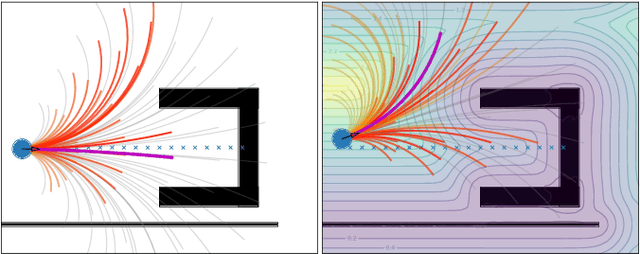
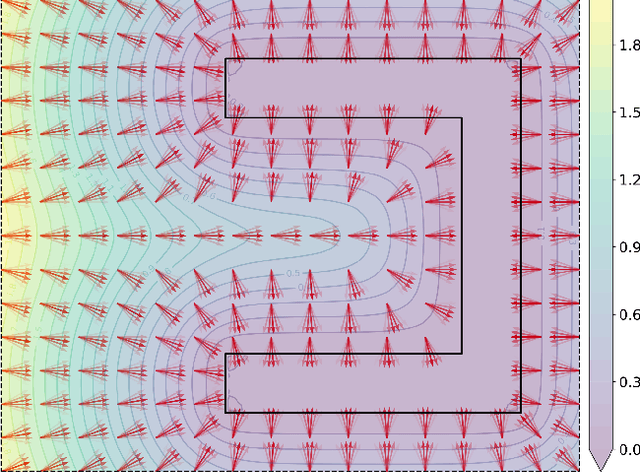
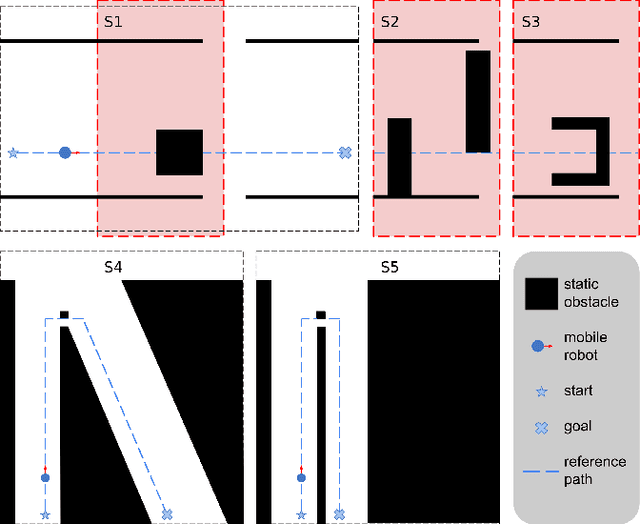

Abstract:For safe and flexible navigation in multi-robot systems, this paper presents an enhanced and predictive sampling-based trajectory planning approach in complex environments, the Gradient Field-based Dynamic Window Approach (GF-DWA). Building upon the dynamic window approach, the proposed method utilizes gradient information of obstacle distances as a new cost term to anticipate potential collisions. This enhancement enables the robot to improve awareness of obstacles, including those with non-convex shapes. The gradient field is derived from the Gaussian process distance field, which generates both the distance field and gradient field by leveraging Gaussian process regression to model the spatial structure of the environment. Through several obstacle avoidance and fleet collision avoidance scenarios, the proposed GF-DWA is shown to outperform other popular trajectory planning and control methods in terms of safety and flexibility, especially in complex environments with non-convex obstacles.
Refined Geometry-guided Head Avatar Reconstruction from Monocular RGB Video
Mar 27, 2025Abstract:High-fidelity reconstruction of head avatars from monocular videos is highly desirable for virtual human applications, but it remains a challenge in the fields of computer graphics and computer vision. In this paper, we propose a two-phase head avatar reconstruction network that incorporates a refined 3D mesh representation. Our approach, in contrast to existing methods that rely on coarse template-based 3D representations derived from 3DMM, aims to learn a refined mesh representation suitable for a NeRF that captures complex facial nuances. In the first phase, we train 3DMM-stored NeRF with an initial mesh to utilize geometric priors and integrate observations across frames using a consistent set of latent codes. In the second phase, we leverage a novel mesh refinement procedure based on an SDF constructed from the density field of the initial NeRF. To mitigate the typical noise in the NeRF density field without compromising the features of the 3DMM, we employ Laplace smoothing on the displacement field. Subsequently, we apply a second-phase training with these refined meshes, directing the learning process of the network towards capturing intricate facial details. Our experiments demonstrate that our method further enhances the NeRF rendering based on the initial mesh and achieves performance superior to state-of-the-art methods in reconstructing high-fidelity head avatars with such input.
Copy-Move Forgery Detection and Question Answering for Remote Sensing Image
Dec 03, 2024



Abstract:This paper introduces the task of Remote Sensing Copy-Move Question Answering (RSCMQA). Unlike traditional Remote Sensing Visual Question Answering (RSVQA), RSCMQA focuses on interpreting complex tampering scenarios and inferring relationships between objects. Based on the practical needs of national defense security and land resource monitoring, we have developed an accurate and comprehensive global dataset for remote sensing image copy-move question answering, named RS-CMQA-2.1M. These images were collected from 29 different regions across 14 countries. Additionally, we have refined a balanced dataset, RS-CMQA-B, to address the long-standing issue of long-tail data in the remote sensing field. Furthermore, we propose a region-discriminative guided multimodal CMQA model, which enhances the accuracy of answering questions about tampered images by leveraging prompt about the differences and connections between the source and tampered domains. Extensive experiments demonstrate that our method provides a stronger benchmark for RS-CMQA compared to general VQA and RSVQA models. Our dataset and code are available at https://github.com/shenyedepisa/RSCMQA.
3D Programming of Patterned Heterogeneous Interface for 4D Smart Robotics
Dec 22, 2023Abstract:Shape memory structures are playing an important role in many cutting-edge intelligent fields. However, the existing technologies can only realize 4D printing of a single polymer or metal, which limits practical applications. Here, we report a construction strategy for TSMP/M heterointerface, which uses Pd2+-containing shape memory polymer (AP-SMR) to induce electroless plating reaction and relies on molecular dynamics, which has both shape memory properties and metal activity and information processing power. Through multi-material DLP 3D printing technology, the interface can be 3D selectively programmed on functional substrate parts of arbitrary shapes to become 4D electronic smart devices (Robotics). Microscopically, this type of interface appears as a composite structure with a nanometer-micrometer interface height, which is composed of a pure substrate layer (smart materials), an intermediate layer (a composite structure in which metal particles are embedded in a polymer cross-linked network) and a pure metal layer. The structure programmed by TSMP/M heterointerface exhibits both SMA characteristics and metal properties, thus having more intelligent functions (electroactive, electrothermal deformation, electronically controlled denaturation) and higher performance (selectivity of shape memory structures can be realized control, remote control, inline control and low voltage control). This is expected to provide a more flexible manufacturing process as platform technology for designing, manufacturing and applying smart devices with new concepts, and promote the development of cutting-edge industries such as smart robots and smart electronics.
FedEdge AI-TC: A Semi-supervised Traffic Classification Method based on Trusted Federated Deep Learning for Mobile Edge Computing
Aug 14, 2023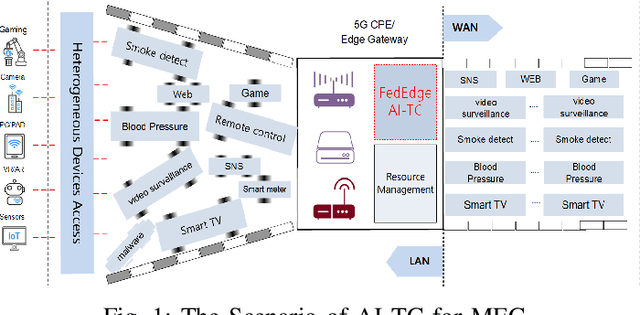
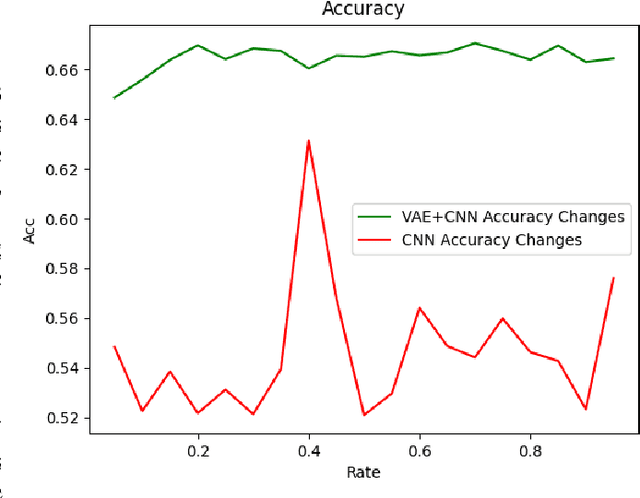
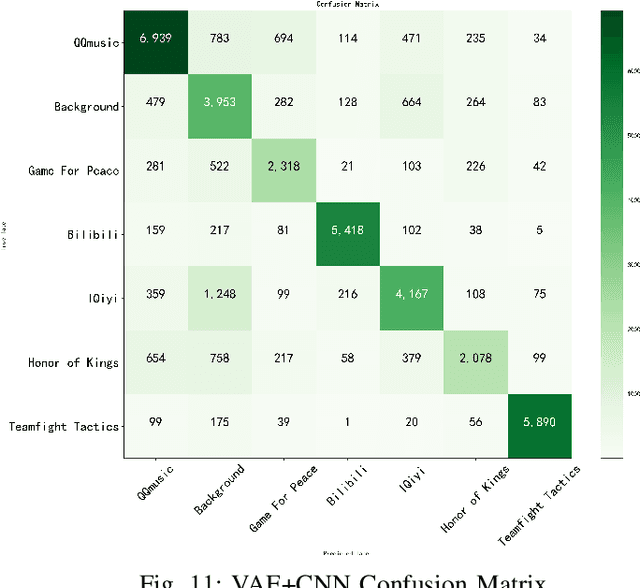
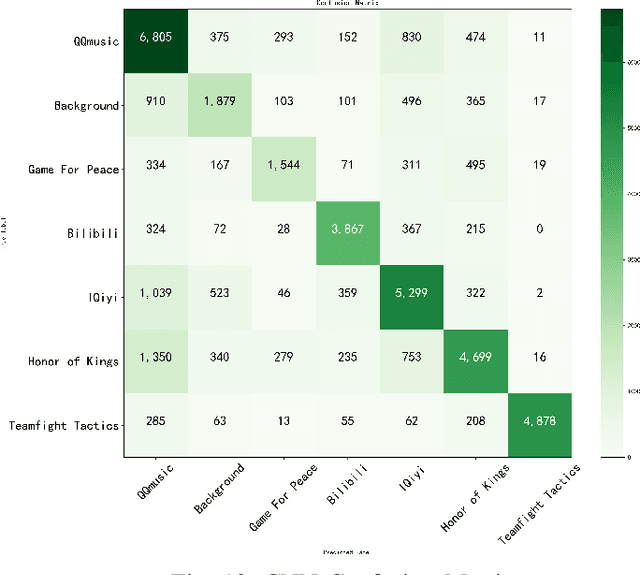
Abstract:As a typical entity of MEC (Mobile Edge Computing), 5G CPE (Customer Premise Equipment)/HGU (Home Gateway Unit) has proven to be a promising alternative to traditional Smart Home Gateway. Network TC (Traffic Classification) is a vital service quality assurance and security management method for communication networks, which has become a crucial functional entity in 5G CPE/HGU. In recent years, many researchers have applied Machine Learning or Deep Learning (DL) to TC, namely AI-TC, to improve its performance. However, AI-TC faces challenges, including data dependency, resource-intensive traffic labeling, and user privacy concerns. The limited computing resources of 5G CPE further complicate efficient classification. Moreover, the "black box" nature of AI-TC models raises transparency and credibility issues. The paper proposes the FedEdge AI-TC framework, leveraging Federated Learning (FL) for reliable Network TC in 5G CPE. FL ensures privacy by employing local training, model parameter iteration, and centralized training. A semi-supervised TC algorithm based on Variational Auto-Encoder (VAE) and convolutional neural network (CNN) reduces data dependency while maintaining accuracy. To optimize model light-weight deployment, the paper introduces XAI-Pruning, an AI model compression method combined with DL model interpretability. Experimental evaluation demonstrates FedEdge AI-TC's superiority over benchmarks in terms of accuracy and efficient TC performance. The framework enhances user privacy and model credibility, offering a comprehensive solution for dependable and transparent Network TC in 5G CPE, thus enhancing service quality and security.
TextShield: Beyond Successfully Detecting Adversarial Sentences in Text Classification
Feb 03, 2023Abstract:Adversarial attack serves as a major challenge for neural network models in NLP, which precludes the model's deployment in safety-critical applications. A recent line of work, detection-based defense, aims to distinguish adversarial sentences from benign ones. However, {the core limitation of previous detection methods is being incapable of giving correct predictions on adversarial sentences unlike defense methods from other paradigms.} To solve this issue, this paper proposes TextShield: (1) we discover a link between text attack and saliency information, and then we propose a saliency-based detector, which can effectively detect whether an input sentence is adversarial or not. (2) We design a saliency-based corrector, which converts the detected adversary sentences to benign ones. By combining the saliency-based detector and corrector, TextShield extends the detection-only paradigm to a detection-correction paradigm, thus filling the gap in the existing detection-based defense. Comprehensive experiments show that (a) TextShield consistently achieves higher or comparable performance than state-of-the-art defense methods across various attacks on different benchmarks. (b) our saliency-based detector outperforms existing detectors for detecting adversarial sentences.
Towards High Fidelity Face Relighting with Realistic Shadows
Apr 02, 2021

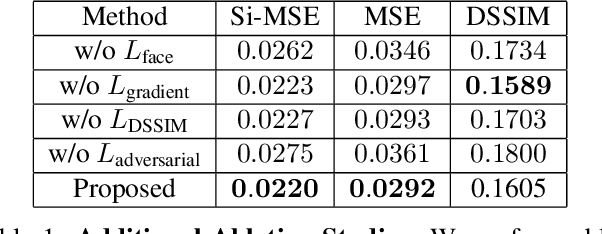

Abstract:Existing face relighting methods often struggle with two problems: maintaining the local facial details of the subject and accurately removing and synthesizing shadows in the relit image, especially hard shadows. We propose a novel deep face relighting method that addresses both problems. Our method learns to predict the ratio (quotient) image between a source image and the target image with the desired lighting, allowing us to relight the image while maintaining the local facial details. During training, our model also learns to accurately modify shadows by using estimated shadow masks to emphasize on the high-contrast shadow borders. Furthermore, we introduce a method to use the shadow mask to estimate the ambient light intensity in an image, and are thus able to leverage multiple datasets during training with different global lighting intensities. With quantitative and qualitative evaluations on the Multi-PIE and FFHQ datasets, we demonstrate that our proposed method faithfully maintains the local facial details of the subject and can accurately handle hard shadows while achieving state-of-the-art face relighting performance.
 Add to Chrome
Add to Chrome Add to Firefox
Add to Firefox Add to Edge
Add to Edge